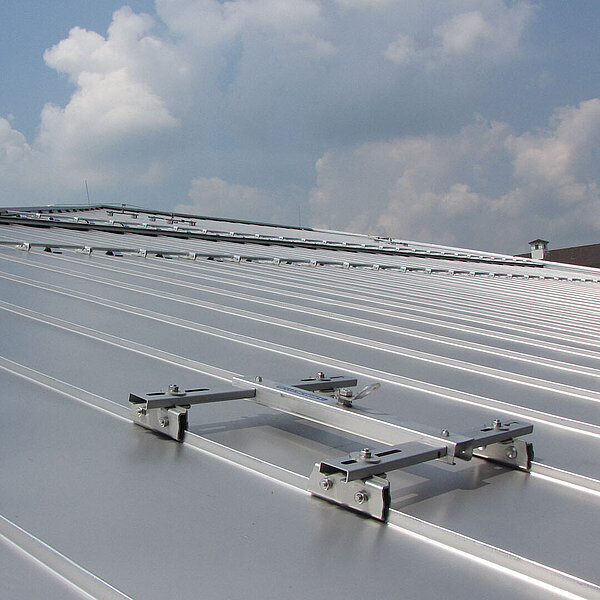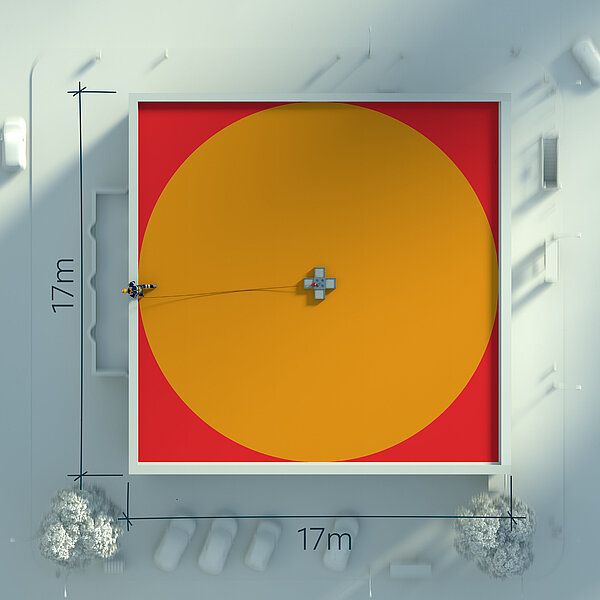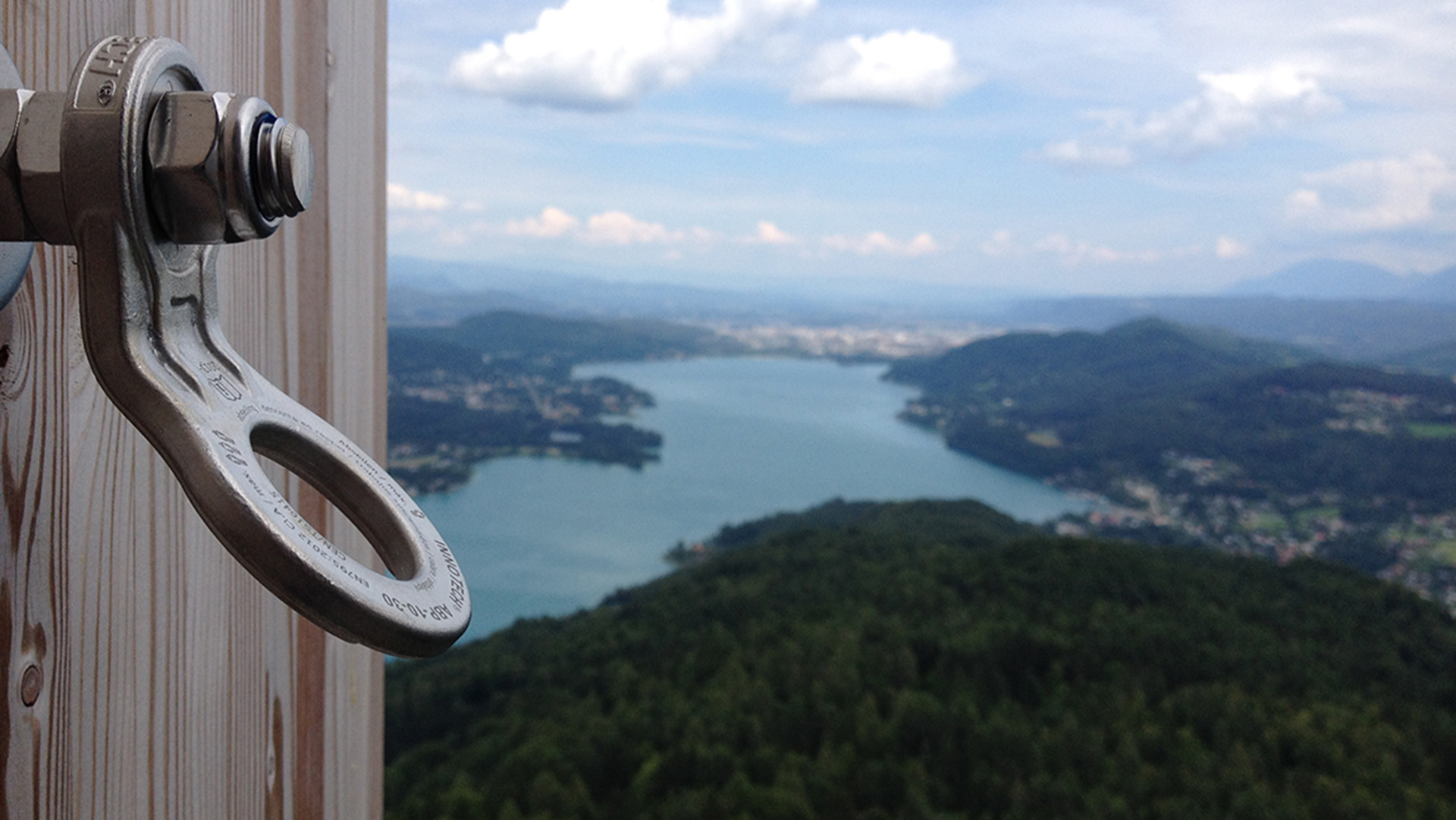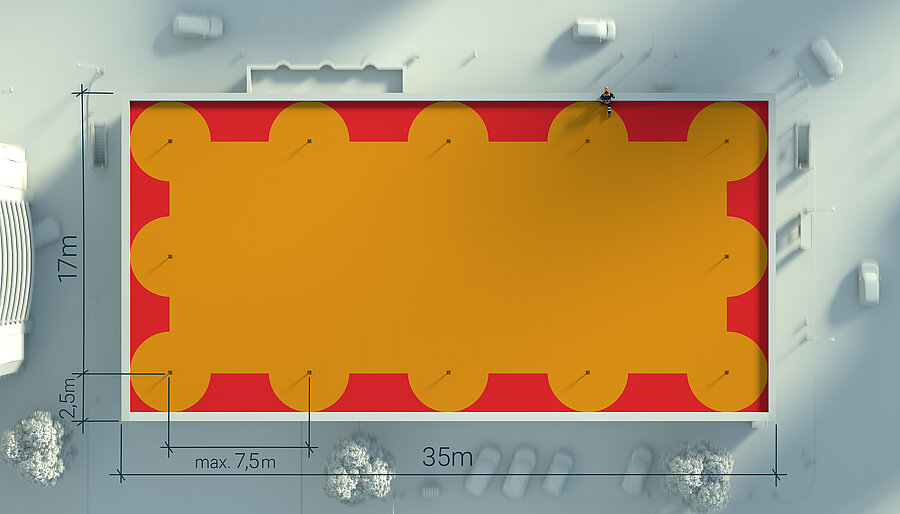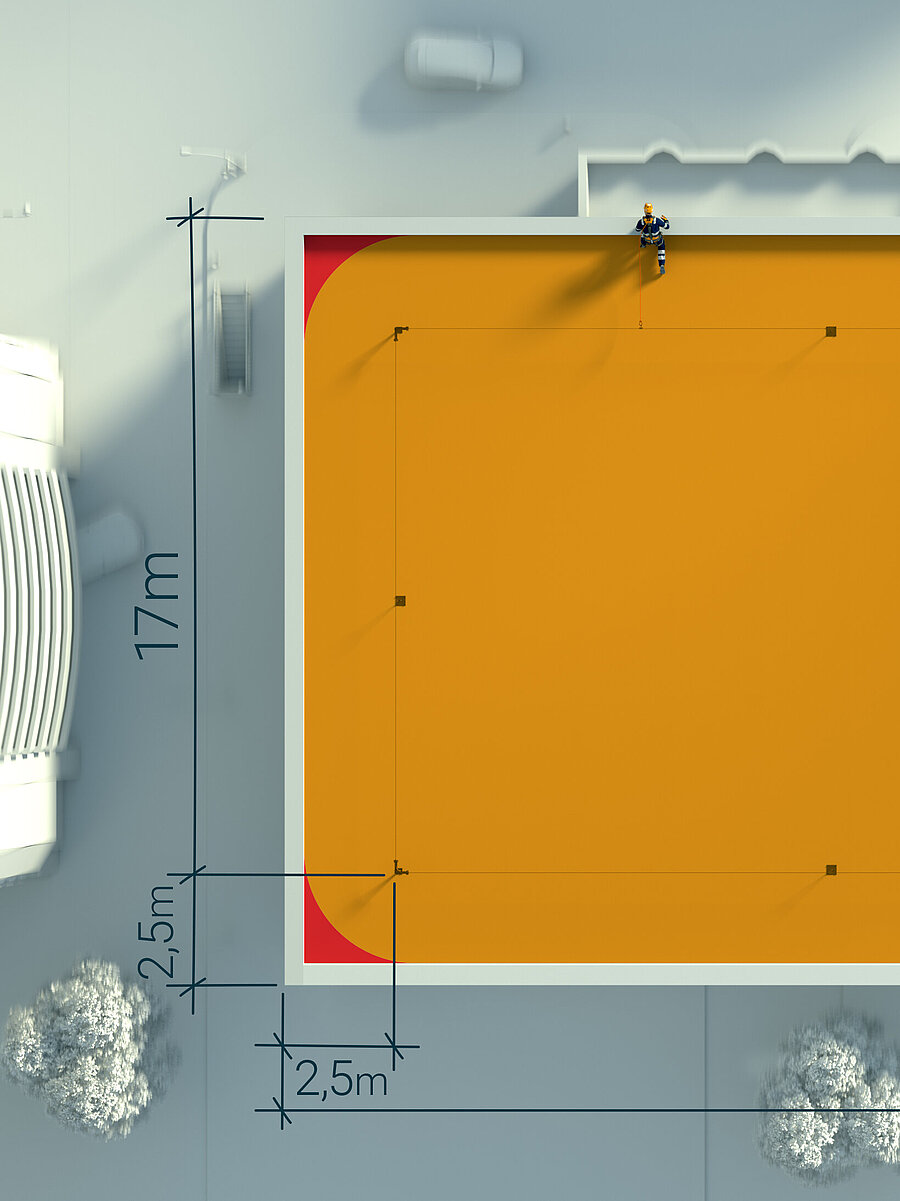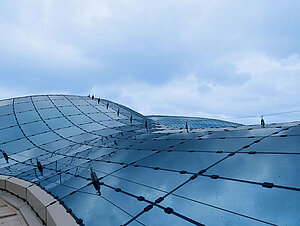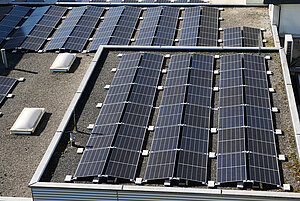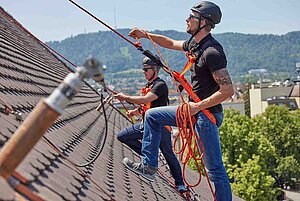Securing pillars are single anchor points (EAPs) for fall protection systems. The personal protective equipment against falls from a height is attached to the anchor point by means of a lanyard. Appropriate specialist knowledge about use of the PPE thus protects against falls.
Securing pillars thus play an important role in fall protection and in ensuring the safety of employees. To guarantee a high level of quality and safety, the anchor points should have building inspection authority approval and be obtained from reputable manufacturers.
What are securing pillars, and what types are there?
Securing pillars are an important component of fall protection for a single user, in combination with personal protective equipment. This is also known as individual protection. They are frequently used on roofs or as a transit solution between ladders or accesses to fall protection systems using cable or rail.
However, a seemingly secure safety harness combined with anchor point is not the complete solution: Guided type fall arresters and fall arrest devices also provide protection for single users, i.e. individual fall protection. Refer also to the wiki post “Restraint and fall arrest systems”.
High-quality securing pillars can be installed on very varied substructures. Different fastening types are available, each with different characteristics. Modern design requires penetration-free attachment, and this should be one of the current options.
INNOTECH provides various single anchor points (i.e. securing pillars), sets of articles, and also safety roof hooks:

SINGLE ANCHOR POINTS/POSTS
ANCHOR POINTS
SINGLE ANCHOR POINTS/POSTS from INNOTECH are available in very varied models and designs. Depending on substructure and requirement, it is therefore possible to create an optimum solution. Its purpose is to safely dissipate the loads which occur ...

SINGLE ANCHOR POINT/POSTS SET ITEMS
ANCHOR POINTS
SINGLE ANCHOR POINT/POSTS SET ITEMS from INNOTECH are available in very varied models and designs, and they contain all products necessary for secure fastening to the substructure. Depending on substructure and requirement, it is therefore ...

SAFETY ROOF HOOKS
ANCHOR POINTS
The SAFETY ROOF HOOKS can be used simultaneously as a single anchor point for personal protective equipment, and for fastening a roof ladder. It is possible to match the colour of the SAFETY ROOF HOOKS to the roof covering. They are available for ...
Legal requirements
The use of securing pillars is specified in various legal requirements for ensuring safety in the workplace. Here are some examples:
- Arbeitsschutzgesetz [industrial protection law (ArbSchG)]: The ArbSchG is the central industrial protection law in Germany. It obliges employers to take the measures necessary to ensure the safety of employees and protect their health. These include the provision and use of suitable protective equipment and measures, such as securing pillars. There is more information here about this.
- DGUV regulation 112-198: This regulation contains specific requirements and rules for the use of securing pillars on flat roofs. It specifies, for example, how securing pillars must be mounted, and the strengths that they require. There is more information about DGUV regulation 112-198 here.
These regulations are just a few examples of how the use of securing pillars in governed legally. It is important that employers and employees familiarise themselves with the applicable regulations as well as the correct use and maintenance of the securing pillars.
Example of use: Securing pillars on a flat roof
Securing pillars are installed for fall protection on flat roofs, and they provide a stable attachment for fall arrest and safety harnesses, and for personal fall protection. Here, the penetration-free attachment of securing pillars on roofs is often preferred, as long as this is possible under local circumstances.
Single anchor points are a good choice for smaller surface areas and as transition solutions, and should therefore form part of a holistic fall protection system. When larger areas require protection, other systems are better suited for maximising user-friendliness and safety. Here are the advantages and disadvantages of anchor points on a flat roof:
- Individual securing pillars are quickly installed on a roof: A single securing pillar is relatively simple and quick to install on a flat roof.
- Cost-effectiveness: Compared with other fall protection systems, individual securing pillars are often more economical.
- Less suitable for large areas: As is evident in the image above, more securing pillars are required on a roof to achieve approximately equal protection of an orange zone, compared with a restraint system based on a lifeline or rail system.
- Reduced user-friendliness and user errors: When EAPs are used, it is additionally necessary to attach/detach the anti-fall PPE. However, this is unnecessary with passable lifeline systems, for example.
You can achieve maximum user-friendliness and safety through penetration-free attachment and by intelligently combining passable lifeline or rail systems with an individual anchor point for roof fall protection.
Who is permitted to inspect securing pillars?
The inspection of securing pillars should be performed only by qualified, certified specialists. These include, for example, employees of companies specialising in industrial safety, or specialised experts from the area of roof renovation and maintenance.
These experts fulfil general requirements and possess the necessary specialist knowledge and expertise to inspect the anchor points correctly. They know the current regulations and standards, and are able to ensure that the securing pillars fulfil the applicable requirements.
The inspection includes stability, fastening, and ability to withstand loads. If the inspection indicates that the securing pillars are damaged or worn, then these must be replaced or repaired immediately, in order to ensure employee safety.
